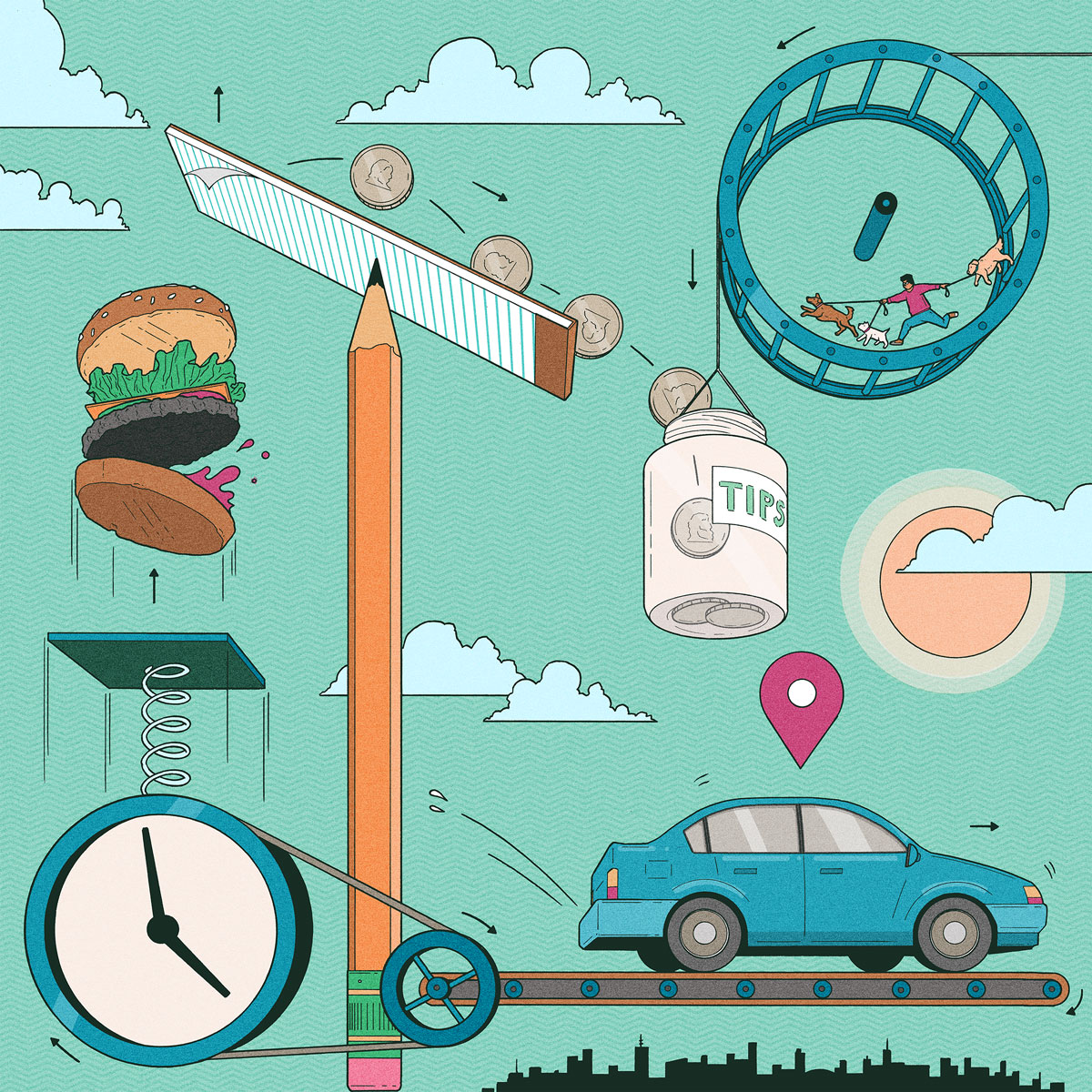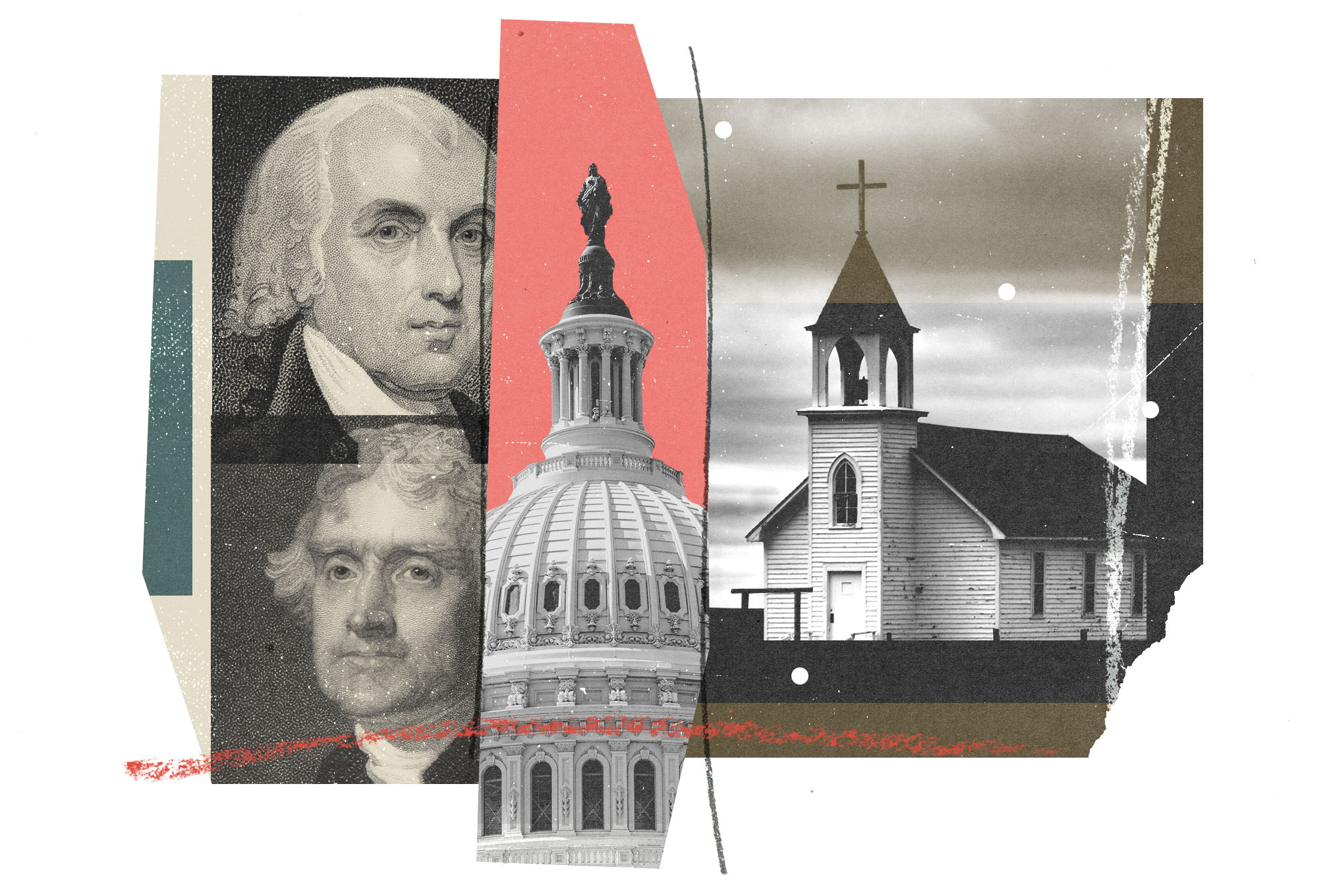
In August 2021, I began working for an education tech company that provides prospective college students with editorial feedback on their college admissions essays. I had recently finished a master of fine arts in poetry and was seeking the kind of work I’d imagined was most suitable for a practicing artist—flexible, remote, seasonal. Hired as a part-time employee, I was assigned four hours and seven minutes of work per day that October, the equivalent of five to six reviews. On the surface, this workload appeared manageable; I could write in the morning, review essays in the afternoon, and still make it to my evening job. But I quickly realized the difference between this kind of commission-based gig work and hourly-wage labor: if I wasn’t typing, I wasn’t getting paid. Take a drink? The clock stops. Restroom break? The clock stops. Blink? Even by November, it took an average of six hours per day to complete my assigned work. I felt like an Industrial-era factory worker: if I paused to dab sweat from my forehead, a contraption on the assembly line would jam, snag, snarl.
Four and a half million people left their jobs in November 2021, according to the Washington Post—more resignations in a single month than the U.S. had ever recorded. This period of frictional unemployment has been variously termed The Big Quit, The Great Reshuffle, and The Great Resignation, denoting the current, historic period in which the U.S. Bureau of Labor Statistics reports 11.4 million job openings and six million people unemployed—nearly two jobs for every unemployed individual. Amid rising inflation rates, nationwide calls for a $15 minimum wage, and Andrew Yang’s 2020 presidential campaign on a platform of universal basic income, the existing labor shortage has led journalists, economists, and academics to speculate about workers’ leverage in the labor market.
Abigail Susik, associate professor of art history at Willamette and author of Surrealist Sabotage and the War on Work (Manchester University Press, 2021), draws a parallel between today’s labor shortage and France’s labor deficits of the interwar period. In a recent New York Times op-ed she asks: “Could the Great Resignation Help Workers? Take a Look at History.” In response to widespread deaths from World War I, the influenza pandemic of 1918–19, and a low birthrate that diminished France’s workforce, she explains, Prime Minister Georges Clemenceau attempted to ameliorate the labor shortage by calling on women, youth, and immigrants to join the workforce. “This influx of workers allowed many employers to keep wages low despite the overall shortfall,” Susik writes, “which in turn stoked worker resentment, leading to a period of wildcat and general strikes throughout France between 1917 and the immediate post-pandemic period.” These protests culminated in legislation that established France’s forty-hour workweek in 1919, long preceding the U.S.’s Fair Labor Standards Act of 1940, which offered similar protections.

Over the summer I asked Susik to tell me more. In our conversation, she described how French Surrealists of the 1920s extended their protest against industrialization by refusing full-time work, resorting to part-time and project-based labor to make ends meet. Instead of working at a Parisian textile factory, Surrealists took just enough “precarious work” to scrape by. But Susik sees few similarities between today’s app-based gigs and part-time work in the 1920s: “Surrealists were not paying into a big company. They would get their cash and leave. The level of technological orchestration of gig labor today makes it so that you’re just a tiny cog in a massive system.”
A December 2021 poll by the Pew Research Center found that 16 percent of American adults had earned money from an online gig platform like Uber, Instacart, or Amazon Flex, and 9 percent were currently earning income via gig work. This reflects market value growth in the global gig economy from $142 billion in 2018 to an estimated $311.6 billion by 2023, as reported by the Tony Blair Institute. But who benefits from an expansion of the gig economy?
Raechelle Mascarenhas, associate professor of economics at Willamette, summarized a conversation with students in her class “The Gig Economy and the Future of Work.” Gig work, she told me, “is presented as an alternative to traditional work. But I want students to understand that the standard employment relationship has come about from many years of workers bargaining for better conditions, asking for benefits, and getting things like health insurance in the U.S. tied to your employment. If you’re doing gig jobs, there might be more control over your schedule, but it comes at a cost. Gig employers don’t provide those kinds of benefits.” Gig workers have learned to expect little more than an hourly wage in return for unpredictable labor that often comes with hidden costs, such as wear on a personal vehicle.

Could today’s workers prefigure— or demand—a model of gig labor that serves their interests by offering fair pay, reasonable work hours, and options for benefits?
Perhaps it’s because of the instability of gig work, and the unpredictability of its future, that Mascarenhas says her students don’t view gigs as offering a sustainable employment model. “I asked students, ‘How many of you would want to do gig work?’ Many said, ‘For the summer I would, but I wouldn’t want this to be my career path.’ There’s really no upward mobility.”
To get a sense of how Willamette students are responding to shifts in the labor market, I spoke to Mandy Devereux, executive director of career initiatives at Willamette. Many students, she says, express interest in career fields that address social justice, climate change, community advocacy, and policy reform. Devereux says students “have a lot of healthy boundary-setting around work and want to mitigate getting involved in situations that led to The Great Resignation.” In the Pacific Northwest, growing opportunities in fields like education and public health have coincided with the development of a new public health major at Willamette, started just before the pandemic. While students are attracted to the flexibility afforded by remote work, most of the undergraduates Devereux counsels are primarily purpose-driven, searching for careers that align with their personal values.
In our conversation about the Surrealists’ refusal of full-time work, Susik referred to the idea of prefigurative politics. The term describes practices that respond to the material realities of an expected or idealized future—for example, an individual who eschews fossil fuels in anticipation of a petroleum-free society. How, then, could today’s workers prefigure—or demand—a model of gig labor that serves their interests by offering fair pay, reasonable work hours, and options for benefits?
Susik lists a few conditions she imagines for a healthier economy, including regulations to reduce the cost of housing and to cap the workweek at forty hours while providing a livable wage. Mascarenhas suggests a model for portable benefits in part-time labor, in which separate employers contribute a fractional sum into a worker’s account to pay for health insurance, time off, and parental leave. While the economic environments of France in 1919 and the U.S. in 2022 differ vastly, the path to improved working conditions hasn’t changed: Gig workers have an opportunity to develop a collective vision of fair labor standards and, like the French Surrealists and Industrial Era workforce, establish a future for the app-based economy in which flexible work is a viable, humane alternative to full-time employment.
••
Chris Ketchum BA’15 is a poet and writer from Moscow, Idaho. He received an MFA from Vanderbilt University and is a current PhD candidate in creative writing at Georgia State University in Atlanta.



